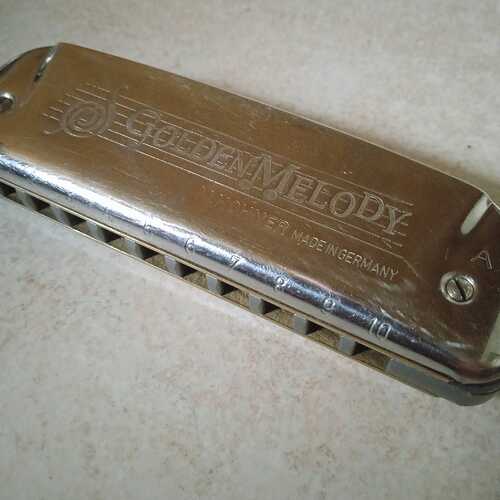I’ve enjoyed reading this thread and the replies regarding overblows and bends. I didn’t know either that overblows could be bent and until recently couldn’t get the blow notes to do anything but go up and down a bit in pitch. When I finally hit one, I got so excited to actually hear an entirely different note.
I’ll chime in on you wanting to buy a new harp. I’ve been building my collection little by little with different harps to test out several makes in different keys.
I have a Golden Melody in C, similar to yours but with standard red comb.
A Special 20 in Db, which I bought by mistake, it was labeled correctly when I bought it as a C#, and I didn’t see the “#”. I call her Oops…  .
.
A Lee Oskar in A.
A Baby Fat in Bb
A Easttop 008k in Bb with a blown 4 blow.
A Hohner Rocket  in Ab
in Ab
A Conjurer in G.
While I’ve yet to try a customized harmonica, all of the above seem to do the trick. The less expensive ones, the 008k and the Conjurer, don’t seem to sound as full and deep as the more expensive harps, but for my playing ability work fine. The Baby Fat is probably a bit better on sound of the cheaper harps but limits to 7 notes, which work for many of the songs I play, but not all, so I team her up with my 008k with a busted 4 blow.
The Conjurer was on sale for $10, the Baby Fat came in at $20, the 008k at about $20, and the Hohner’s and Lee Oskar in the $40 to $50 range.
I like them all! The more expensive harps definitely sound richer and fuller to my ear. My favorite is probably Oops, since she sounds great and bends well across the board.
A specialized harp set up to do over blows more easily would be awesome but I imagine you up the ante a bit on price, but probably we’ll worth it if you use them a lot.
Enjoy the ride and let us know what you get and how it works out 
![]()

